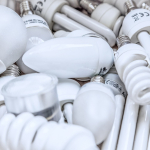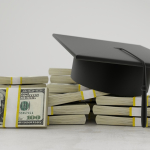The landscape of Student Loan Forgiveness in the United States continues to shift, leaving many borrowers uncertain about their financial future. With ongoing court ruling battles challenging existing programs, changes in federal policy, and the evolution of repayment options, understanding your position has never been more crucial. This guide will help you navigate the complexities of student debt relief in 2025, from understanding the impact of Biden policy on programs like the SAVE plan to preparing for potential future changes that could affect your eligibility for forgiveness.
Understanding the Current State of Student Loan Forgiveness in 2025
As you navigate your educational debt, it’s crucial to understand the dynamic landscape of student debt policies. The year 2025 brings significant shifts, particularly with the Trump administration’s recent changes to the Public Service Loan Forgiveness (PSLF) program. These new regulations, effective July 1, 2026, redefine “qualifying employer” by excluding organizations engaged in “substantial illegal purpose” activities. This could include groups supporting undocumented immigrants or providing gender-affirming care for minors, potentially leading to a court ruling.
Here’s a breakdown of key points regarding these changes:
| Policy Aspect | Details |
|---|---|
| Effective Date | July 1, 2026 |
| Employer Scope | The new rule narrows the definition of qualifying employers for PSLF by excluding organizations involved in activities deemed to have a “substantial illegal purpose,” potentially impacting those supporting undocumented immigrants, providing gender-affirming care to minors, or engaging in “illegal discrimination.” |
| Impact on Borrowers | Borrowers currently or previously working for organizations that may no longer qualify will still receive credit for their payments until the change takes effect. It’s important to note the rule applies “prospectively,” meaning past qualifying payments are not retroactively negated if your employer is later deemed ineligible. |
| Legal Challenges | Numerous advocacy groups and Democratic lawmakers are opposing these new regulations, anticipating a court ruling to challenge what they consider an overreach of executive power. Therefore, while these rules are finalized, their ultimate implementation could be subject to legal review. Keep in mind that a Biden policy such as the SAVE plan may offer alternatives. |
It’s evident that the future of some student debt relief is in flux, and staying informed about ongoing legal challenges and policy developments is essential.

As you face an evolving landscape of student debt, understanding your repayment choices is crucial. The Biden policy introduced the SAVE plan, designed to offer more affordable monthly payments by calculating them based on a borrower’s income and family size, potentially leading to earlier debt cancellation. However, recent developments, including a court ruling, highlight the importance of staying informed and proactive.
Here’s a brief overview of key considerations:
| Feature | Description |
|---|---|
| SAVE Plan | Offers lower monthly payments, calculated based on your income and family size. Ensure you understand its specific terms and how it applies to your loan type, as these can change due to policy adjustments or legal challenges. |
| Other IDR Plans | Explore alternative Income-Driven Repayment (IDR) plans like Income-Contingent Repayment (ICR) and Pay As You Earn (PAYE). Each has distinct eligibility criteria and forgiveness timelines (e.g., 20 or 25 years), so compare them to find the best fit for your financial situation. |
| PSLF Program | If you work in public service, the Public Service Loan Forgiveness (PSLF) program remains an option. However, be aware of recent Trump administration rule changes taking effect July 1, 2026, which redefine “qualifying employer” to exclude organizations engaged in “substantial illegal purpose.” |
| Stay Informed | Continuously monitor updates from the Department of Education. Legal challenges and policy shifts can impact even established programs. |
Always consider your personal financial situation and stay updated on official announcements to make informed decisions about your student debt.
Preparing for the Future: Potential Changes and How to Stay Informed
As the landscape of student debt policy continues to evolve, staying informed is crucial for managing your loans effectively. Recently, a significant shift occurred with a new Trump administration policy impacting the Public Service Loan Forgiveness (PSLF) program. This policy, finalized on October 30, 2025, and effective July 1, 2026, redefines “qualifying employer.” Consequently, organizations engaged in activities deemed to have a “substantial illegal purpose” will no longer qualify, including those supporting unlawful immigration or providing certain medical procedures for minors.
This change could lead to a court ruling, as borrower advocates have already pledged lawsuits challenging its legality. While your status for past payments won’t be affected, future eligibility under this revised definition could impact you. Therefore, if you are relying on PSLF or currently enrolled in the SAVE plan, it’s vital to monitor official announcements from the Department of Education and reputable student loan advocacy groups. Furthermore, be prepared for potential legal challenges that could further alter the program’s trajectory.
Frequently Asked Questions
What is the Public Service Loan Forgiveness (PSLF) program, and how is it changing?
The Public Service Loan Forgiveness (PSLF) program, established by Congress in 2007, was designed to encourage individuals to enter public service by offering forgiveness of their remaining federal student loans after 10 years of qualifying employment and monthly payments. Recently, the U.S. Department of Education released a new rule to redefine “qualifying employer” to exclude organizations that engage in unlawful activities with a substantial illegal purpose. This change aims to ensure that PSLF benefits are directed only to borrowers employed by organizations genuinely serving the public good, such as teachers, first responders, and civil servants. The new rule, which amends the definition of “qualifying employer” to exclude organizations that engage in unlawful activities, will take effect on July 1, 2026.
What types of activities might disqualify an employer under the new PSLF rule?
The new PSLF rule specifies that organizations engaging in activities with a “substantial illegal purpose” will be excluded from the program. While the exact definition of “illegal” activity is subject to interpretation, the Education Department has indicated that such conduct will likely include providing support for undocumented immigrants, performing prohibited medical procedures like gender-affirming care for minors, supporting terrorism, and aiding and abetting illegal discrimination. The Trump administration asserts that taxpayer funds should not indirectly or directly subsidize illegal activities, focusing on unlawful actions that contradict the public good. The Education Secretary will make determinations based on a preponderance of the evidence, considering various types of evidence and providing an appeals process for employers.
How will the new PSLF rule affect current borrowers?
The new PSLF rule, slated to take effect on July 1, 2026, will be applied prospectively. This means that if your employer is deemed ineligible next summer, you, as a borrower, will not lose payment credits accumulated under the program prior to that date. It’s crucial not to panic or make immediate decisions about your loan strategy. While legal challenges against the rule are expected, if upheld, impact will only apply to future eligibility. The Department of Education will provide prompt notification to both employers and affected borrowers if an organization’s eligibility is at risk. You will continue to receive payment credits until a final determination is made regarding your employer’s status.
What should borrowers do in light of these upcoming changes to PSLF?
Given the uncertainty surrounding the new PSLF rule and the potential for legal challenges, it is advisable for borrowers to remain informed but avoid making hasty decisions about their student loan strategy. The rule is scheduled to take effect on July 1, 2026, and will be applied prospectively. You should continue to make qualifying payments and keep meticulous records of your employment and payments. Stay updated on official announcements from the Department of Education and consider consulting with student loan advisors for personalized guidance. While the rule includes an appeals process for employers, borrowers themselves cannot appeal their employer’s status. Lawsuits challenging the new rule are anticipated, which could further impact its implementation.














Comments are closed.